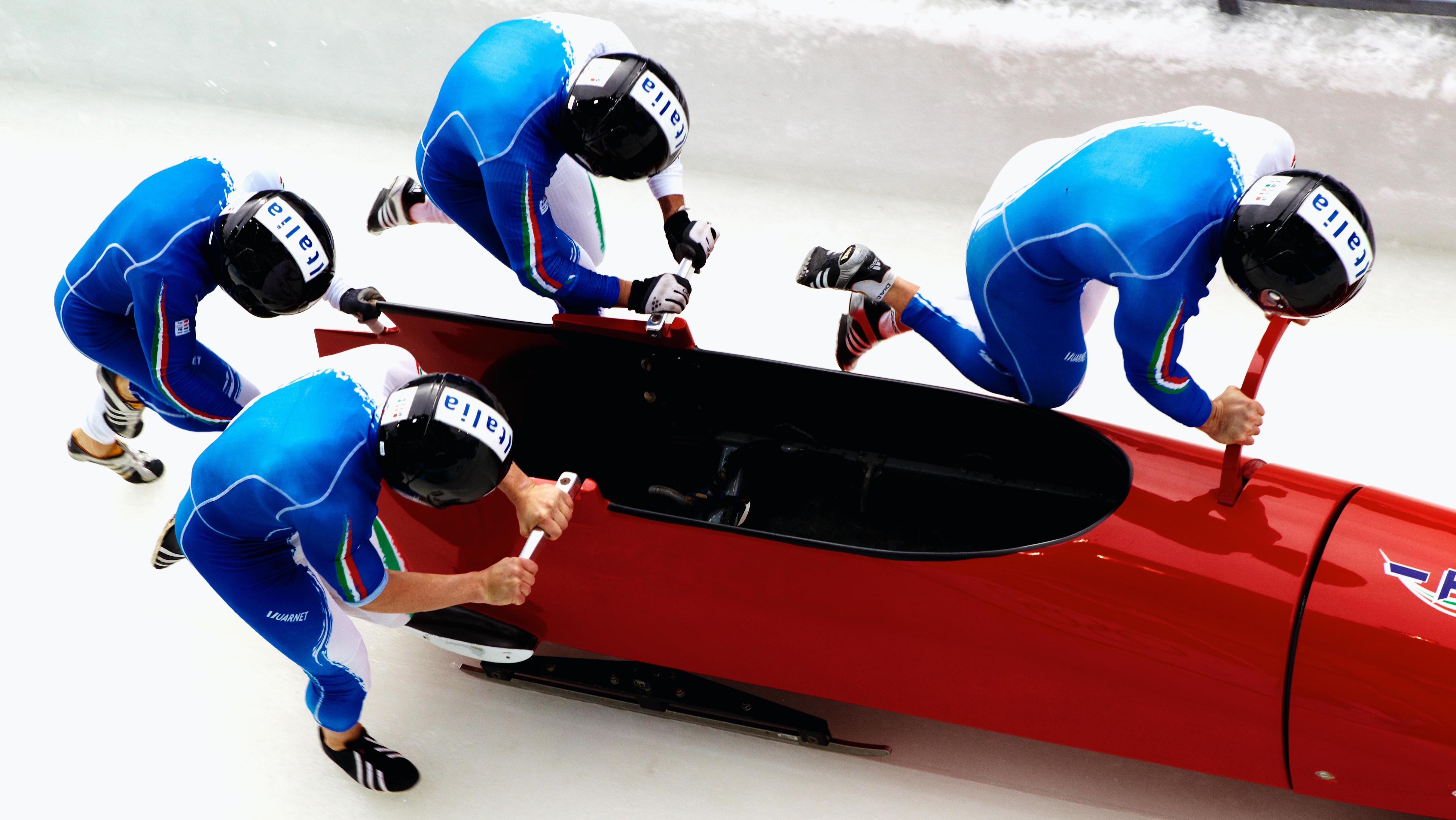
When it comes to adrenaline-pumping winter sports, bobsleigh stands out as one of the most thrilling and fascinating. Originating in the late 19th century, bobsleigh has evolved into a high-speed, gravity-defying sport that tests the limits of human endurance and precision. From its exhilarating start on the track to its heart-stopping twists and turns, bobsleigh is a true testament to the ultimate fusion of skill, teamwork, and courage.
In this article, we will delve into the world of bobsleigh and uncover 12 amazing facts that shed light on the history, rules, and sheer excitement of this remarkable sport. Whether you’re a die-hard fan or simply curious about the complexities of bobsleigh, get ready to learn something new and gain a deeper appreciation for this exhilarating winter pastime.
Key Takeaways:
- Bobsleigh is a thrilling team sport with a rich history dating back to the 19th century, reaching incredible speeds of over 80 miles per hour, and demanding exceptional teamwork and athleticism.
- Bobsleigh competitions feature both two-man and four-man events, and athletes experience intense G-forces, requiring nerves of steel and rigorous training to navigate the track with precision.
The origins of bobsleigh date back to the 19th century
Bobsleigh, also known as bobsled, has a rich history that traces back to the late 19th century. Originally developed in Switzerland, it quickly gained popularity as a thrilling winter sport.
Bobsleigh can reach incredible speeds
One of the most exciting aspects of bobsleigh is the incredible speeds that can be achieved. Athletes can reach speeds of over 80 miles per hour, making it one of the fastest sports in the world.
The sport requires exceptional teamwork
Bobsleigh is a team sport that demands exceptional coordination and teamwork. The pilot, who steers the sled, relies on the swift and synchronized movements of their crew to navigate the twists and turns of the track.
The bobsleigh track is like a work of art
The construction of a bobsleigh track is a meticulous process. Engineers carefully design the track to ensure the perfect balance of speed and safety. The track’s curves and angles are strategically built to provide a thrilling ride for athletes.
Bobsleigh athletes experience intense G-forces
As bobsleigh hurtles down the track at high speeds, athletes experience intense G-forces. These forces can reach up to five times the force of gravity, putting tremendous physical strain on the body.
The sport has both two-man and four-man events
Bobsleigh competitions feature both two-man and four-man events. In the two-man event, a pilot and a brakeman compete together, while the four-man event includes a pilot and three brakemen.
Bobsleigh has been an Olympic sport since 1924
Bobsleigh made its first appearance in the Winter Olympics in 1924 and has remained an integral part of the games ever since. Athletes from around the world compete for the coveted Olympic medals in this exhilarating sport.
The sleds used in bobsleigh are aerodynamically designed
To maximize speed and efficiency, bobsleigh sleds are meticulously designed to minimize air resistance. The sleek, aerodynamic shape of the sleds allows for optimal performance on the track.
Bobsleigh requires incredible strength and athleticism
Bobsleigh athletes are not only skilled in navigating the track but also possess incredible strength and athleticism. They undergo rigorous training and conditioning to build the necessary power and endurance for this demanding sport.
The sport often relies on the push-start technique
In order to generate momentum at the beginning of the race, bobsleigh teams rely on the push-start technique. Athletes sprint for a short distance, pushing the sled before jumping in and steering down the track.
Bobsleigh competitions take place on artificial tracks
While bobsleigh tracks were originally made of ice, modern competitions are held on artificial tracks. These tracks are constructed with a mixture of ice and other materials to ensure consistent conditions for the athletes.
Bobsleigh requires nerves of steel
The exhilarating nature of bobsleigh requires athletes to have nerves of steel. The adrenaline and speed can be overwhelming, making it essential for athletes to remain calm and focused throughout the race.
Conclusion
Bobsleigh is an exhilarating sport that combines speed, skill, and teamwork. With its fascinating history and thrilling moments on the track, there are always new and interesting facts to learn about this winter sport. From its origins in Switzerland to its evolution into a globally recognized competitive event, bobsleigh continues to captivate athletes and audiences alike.Whether it’s the incredible speeds reached on the track, the intricacies of the equipment, or the physical demands placed on the athletes, bobsleigh is a sport that never fails to amaze. So the next time you watch a bobsleigh race, remember these 12 fascinating facts and impress your friends with your in-depth knowledge of this high-speed winter sport.
FAQs
1. How fast do bobsleds go?
Bobsleds can reach speeds over 90 miles per hour (145 kilometers per hour). This incredible velocity is achieved through the combination of gravity, the steep track, and the sheer power and acceleration of the athletes pushing the sled.
2. How many people are in a bobsled team?
There are typically two or four athletes in a bobsled team. The team consists of a pilot, who steers the sled, and pushers, who provide the initial burst of speed at the start of the race.
3. How long is a bobsled track?
A standard bobsled track is around 1,500 to 1,600 meters long. However, the exact length can vary depending on the track location and competition requirements.
4. What are the different types of bobsled events?
There are two main types of bobsled events: two-man and four-man. In the two-man event, there are two athletes in the sled, whereas in the four-man event, there are four athletes. Additionally, there are also women’s events, including two-woman and monobob events.
5. What is the history of bobsleigh?
Bobsleigh originated in Switzerland in the late 19th century as a recreational activity. It quickly evolved into a competitive sport and made its Olympic debut in 1924 at the Winter Games in Chamonix, France.
6. How much does a bobsled weigh?
A two-man bobsled typically weighs around 384 kilograms (847 pounds), while a four-man bobsled can weigh up to 630 kilograms (1,389 pounds). The weight is distributed to ensure optimal balance and control on the track.
Bobsleigh's thrilling history and incredible athleticism make this sport a captivating subject. For more fascinating stories, explore the hilarious and heartwarming tale behind the Jamaican bobsleigh team that inspired the classic comedy "Cool Runnings." Their unlikely journey from a tropical island to the icy tracks of the Winter Olympics is sure to leave you grinning from ear to ear.
Was this page helpful?
Our commitment to delivering trustworthy and engaging content is at the heart of what we do. Each fact on our site is contributed by real users like you, bringing a wealth of diverse insights and information. To ensure the highest standards of accuracy and reliability, our dedicated editors meticulously review each submission. This process guarantees that the facts we share are not only fascinating but also credible. Trust in our commitment to quality and authenticity as you explore and learn with us.


